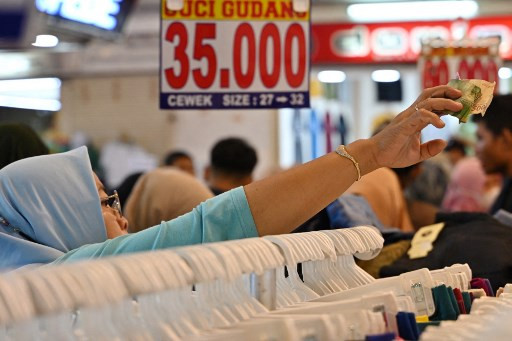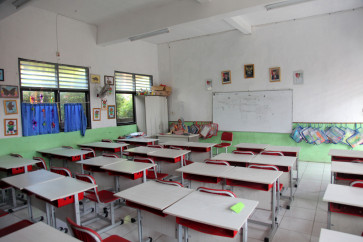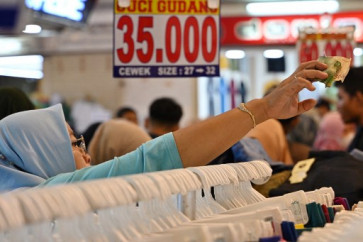Popular Reads
Top Results
Can't find what you're looking for?
View all search resultsPopular Reads
Top Results
Can't find what you're looking for?
View all search resultsIndonesia’s consumers: Shifting in spending trends
The lower-income group is using savings to maintain consumption, with their spending surpassing pre-pandemic levels just recently in 2024. This group’s rising per capita spending is eroding their savings.
Change text size
Gift Premium Articles
to Anyone
Household consumption’s contribution to the national economy is falling.
Indonesia's economy still promises high economic growth in the range of 5 percent in 2024 and 2025. Fundamentally, Indonesia's economic growth has always been supported by consumption growth which contributes around 54 percent. We note several interesting conditions related to the development of consumption in Indonesia after the pandemic, namely consumption growth has not exceeded the 5 percent level for the last two years (2022-2023).
In the first quarter of 2024, consumption growth even only grew at 4.97 percent even though it had been supported by the General Election and Ramadan. To see the current development of public consumption and what the outlook is, we analyzed using big data analysis, Mandiri Spending Index (MSI) and, at the same time, we reconfirmed with some data from other prominent institutions. Our findings are as follow.
The size of the middle class has shrunk significantly.
Using the World Bank’s definition of consumer classes, we can track consumer class dynamics from the pre-pandemic period to the present. This consumer class grouping is based on per capita consumer expenditure, which is then compared to the poverty line. Only the top (upper class) and bottom (poor) classes saw relatively little change in proportions between their pre- and post-pandemic periods. More significant changes in proportion can be seen in the middle part, which includes the middle class, the aspiring middle class, and the vulnerable. For example, the proportion of Indonesia’s middle class has decreased from approximately one fifth (21.4 percent) prior to the pandemic to less than one fifth (17.4 percent) today.
After the pandemic, the proportion of the middle class in Indonesia has decreased by 4 percentage points, with many people moving down to lower economic classes rather than moving up. Among all classes, only the middle class experienced a decrease in proportion compared to pre-pandemic levels, with a drop of up to 4.0 percentage points. Of course, some middle-class people have moved to the upper class, but many more have moved down to a lower class. This is demonstrated by the increase in the proportion of the upper class, which was only 0.1 percentage points, while the proportion of the aspiring middle class increased even more, going up 1.3 percentage points to 49.5 percent.
On the other hand, some people of the aspiring middle class have dropped to a lower class (vulnerable), causing the share of this class to increase to 23.3 percent in 2023, the highest increase among all classes (+2.7 percentage points). This means that, in proportion, the middle class is shrinking, whereas the lower classes are growing. Suppose the proportion of the middle class declines while the overall household consumption falls. In that case, it may indicate that more people currently have less disposable income, thus lowering the overall consumer purchasing power. This may weaken the economic confidence.



















